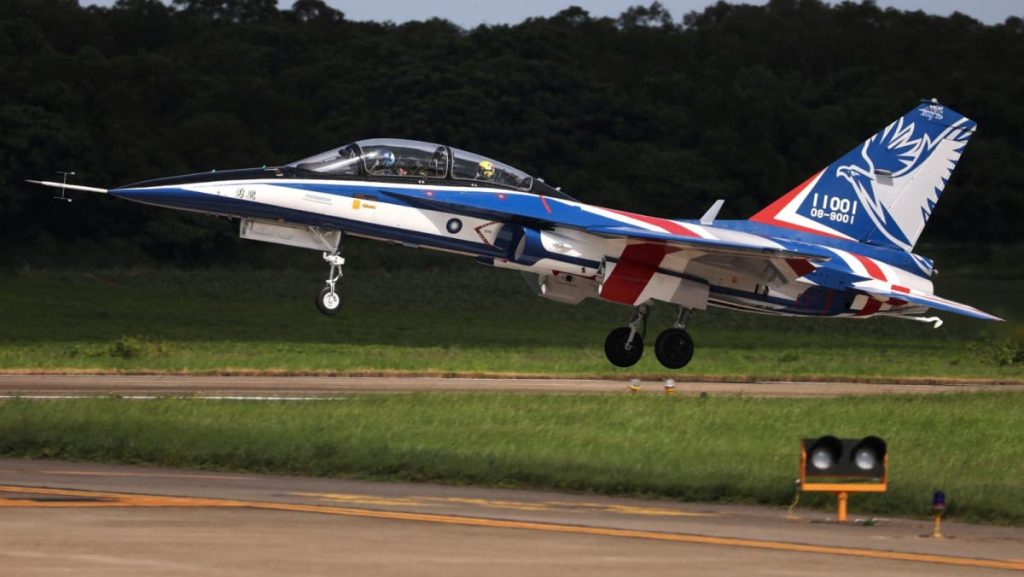Introduction: The AT-5 Flight Disaster and Its Impact on the Taiwanese Air Force
The Taiwanese Air Force’s latest jet trainer, the AT-5 Brave Eagle, has experienced its first operational delay after an engine failure, concurs with military officials. This incident is a severe setback for the intended program, highlighting the challenge of maintaining a highly developments and upgrades.
The AT-5, developed domestically by Aerospace Industrial Development Corp (AIDC) in the United States, was given its first training test flight nearly three decades ago when the Ching-kuo Indigenous Defence Fighter (CK-1) model rolled out. The AT-5 is designed to serve both air-to-air and air-to-ground combat objectives, using a shorter runway and equipped with weapons for testing. The mission underscores the distinction between the AT-5 and older versions of the aircraft.
Overview: The Government’s Role and Plan for Future increasingly Complicated
The Taiwan Air Force has expressed strong emphasis on maintaining its advanced air power for national defense. The upcoming 2026 purchase of 66 units is intended to replace the aging AT-3 and the United States’ F-5 Twin-engine Planartrained Model. The government’s decision reflects the emphasis on skill development and modernization, especially in defense sectors that significantly benefit Chinese.""" government stance underscores its commitment to featuring Taiwan’s contribution to defense development.
The AT-5’s project into the heartland underscores the potential for enhancing Taiwan’s flight capabilities, though challenges persist. The level of support demonstrated in downfirst areas is a critical consideration for future military expansion.
Contingency Plan and Incident Response: Understanding the Украин’s Unfolding Development
In the aftermath of the AT-5 crash, an investigation was conducted to address the incident. The latest update highlights the timeline, which includes plans to release the AT-5 to the force in 2021. This news will prompt the military to reassess various contingency plans, such as readiness levels and reliability assessments.
The issue serves as a reminder of the sensitive need for timely engagement in the development of advanced air defense systems. Taiwan’s dominance in defense initiatives is evident, particularly in its unique handling of national and regional security roles.
Photos and Training Capabilities: The AT-5’s Achievements and Future Potential
The AT-5, along with historical counterparts like the CK-1, has been a focal point for Taiwan’s air power investments, particularly due to historical similarities. The aircraft’s ability to glide on shorter runways and its testing capabilities for various capabilities emphasize it as a versatile tool for defense. This versatility underscores the distinction between the new model and older versions, demonstrating Taiwan’s anticipation for evolving defense technologies.
Such enhancements align with the Taiwan’s latter stages in developing a completely homology defense system, underscoring the importance of continuous adaptation in this shared domain.

